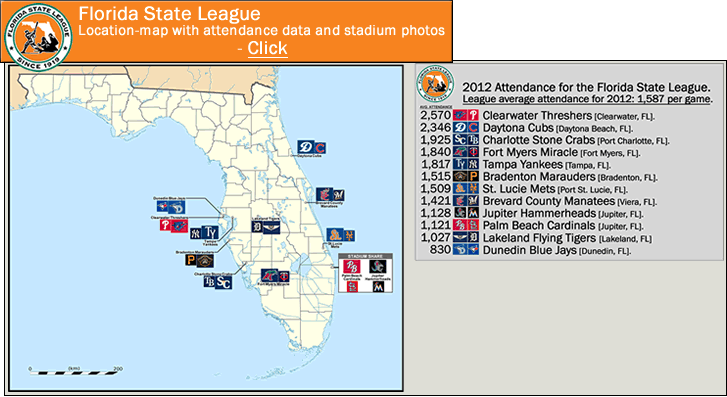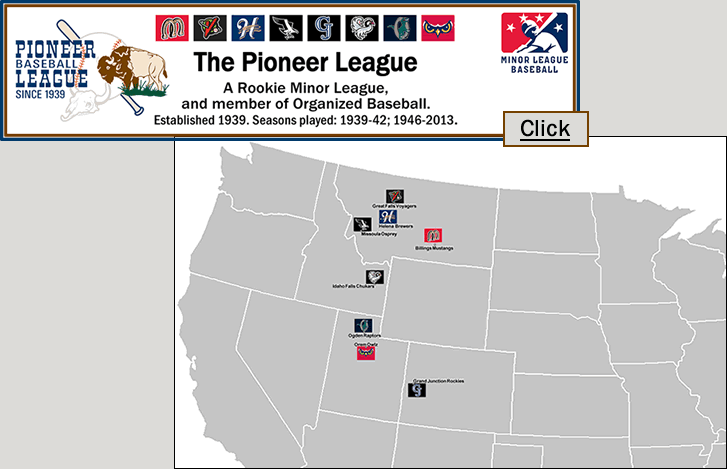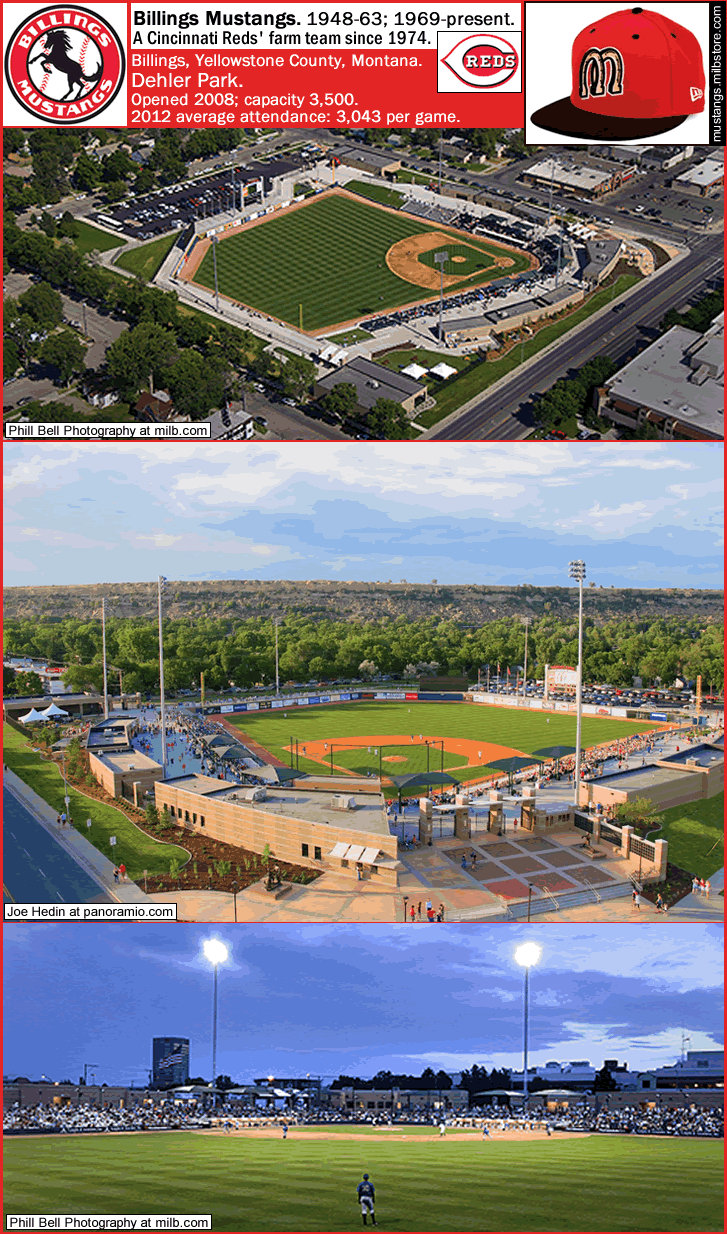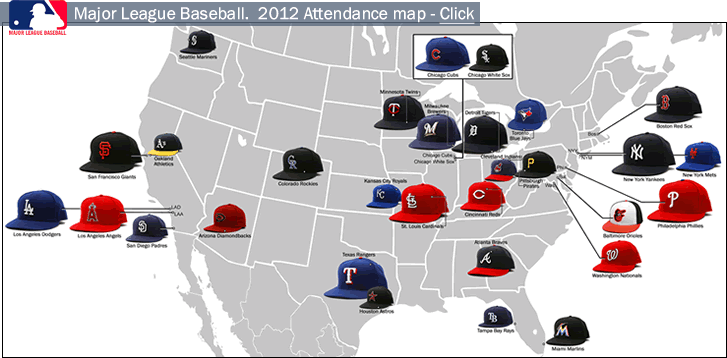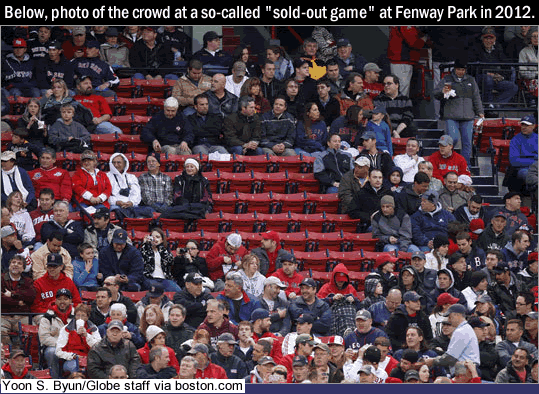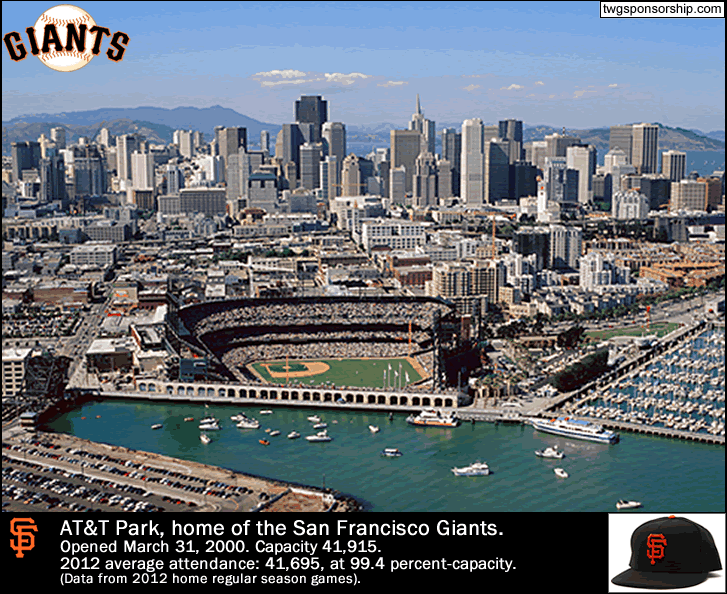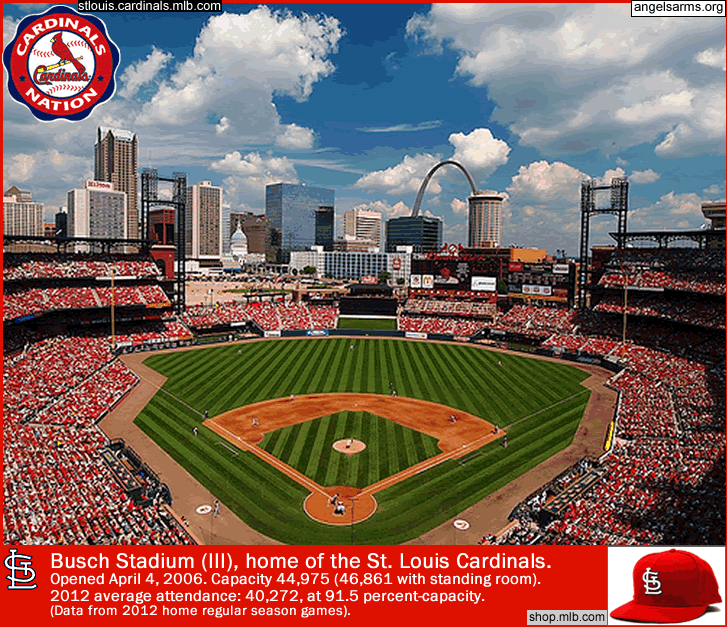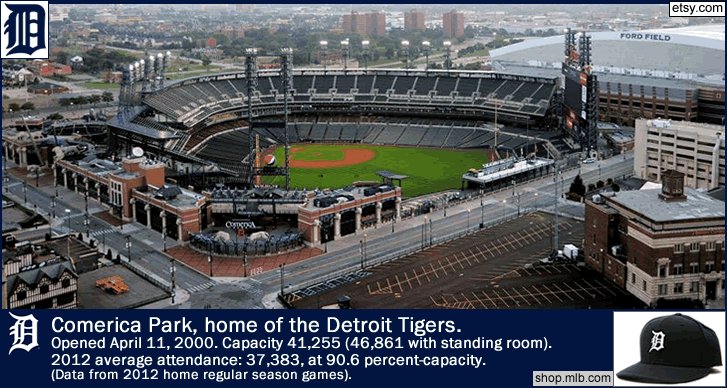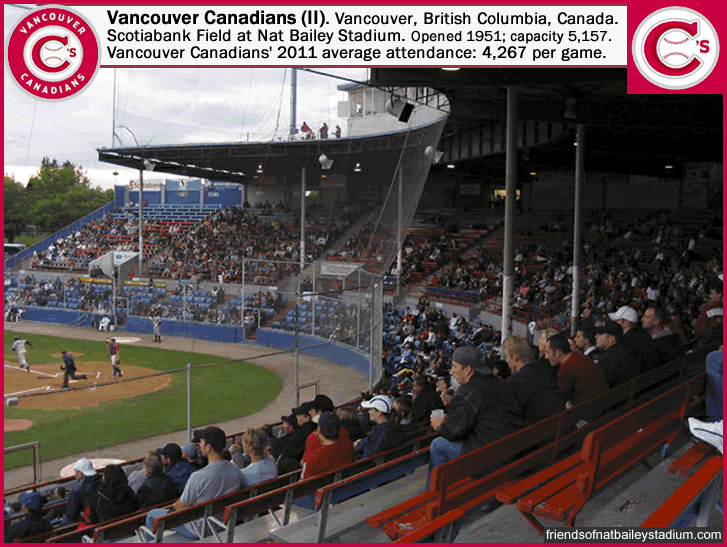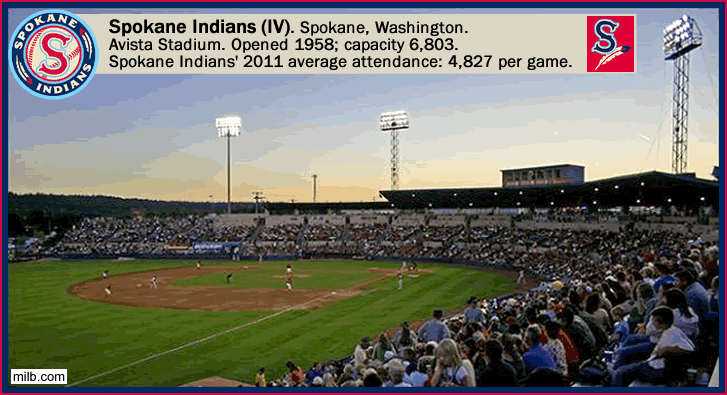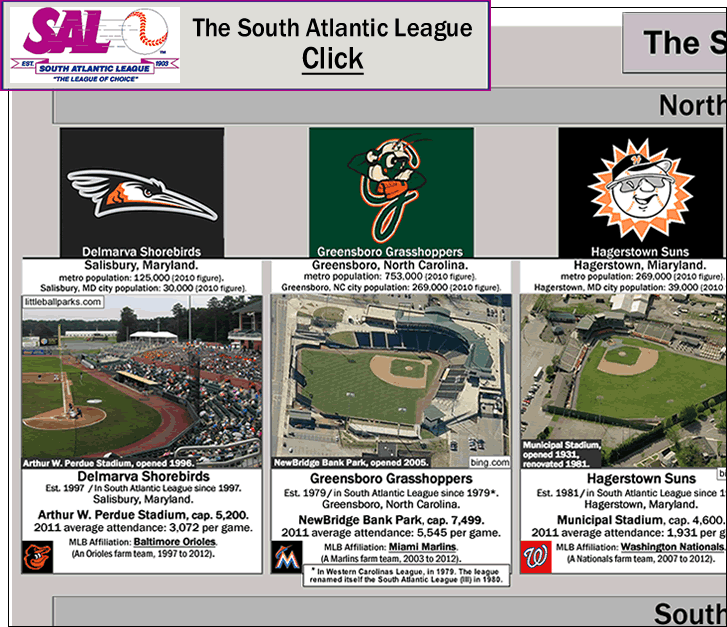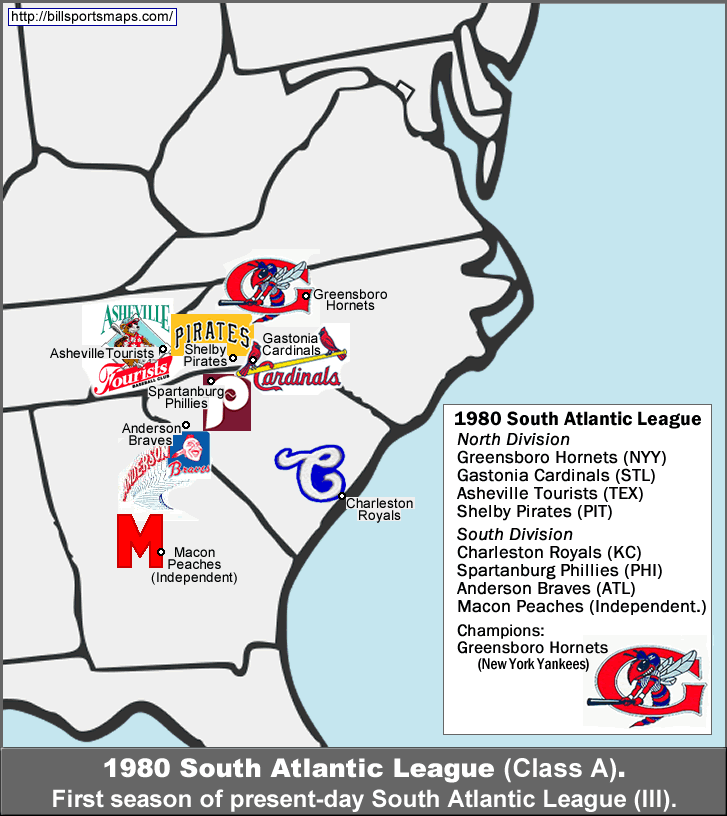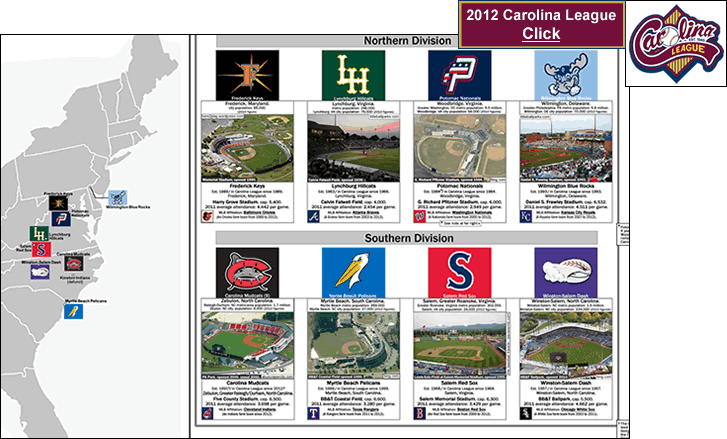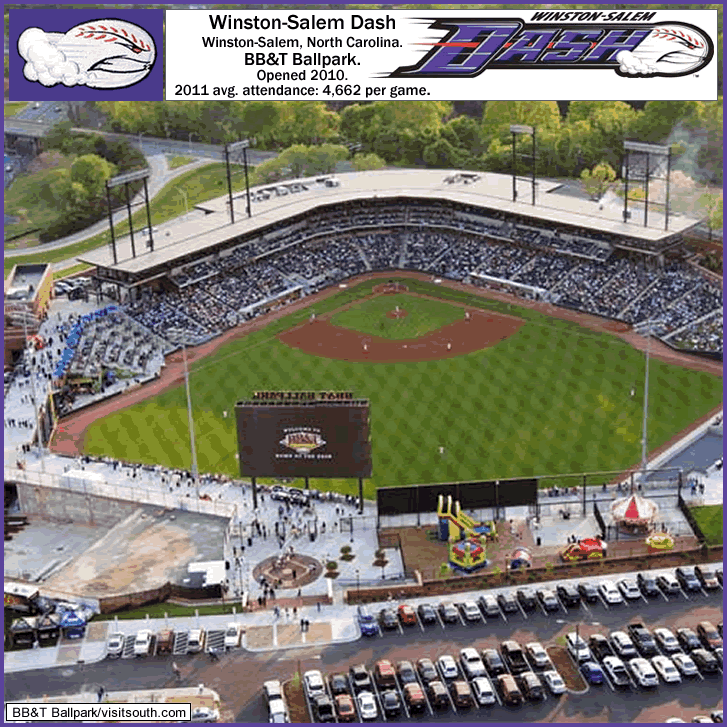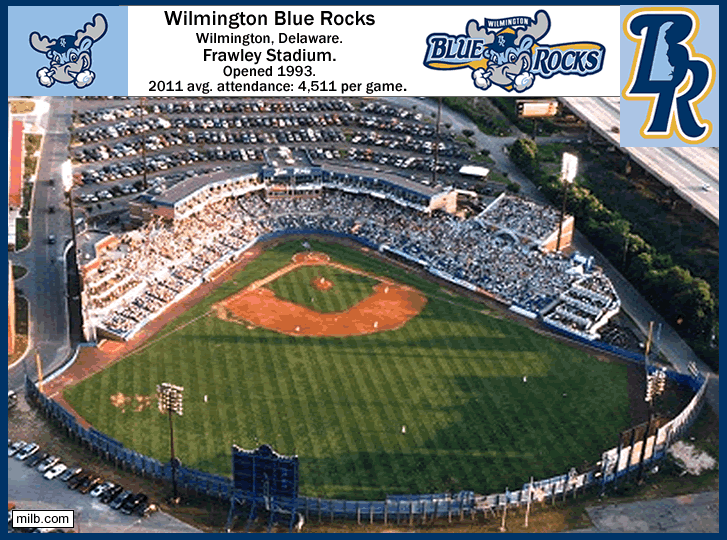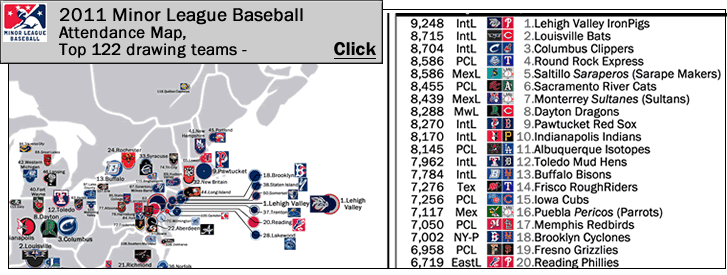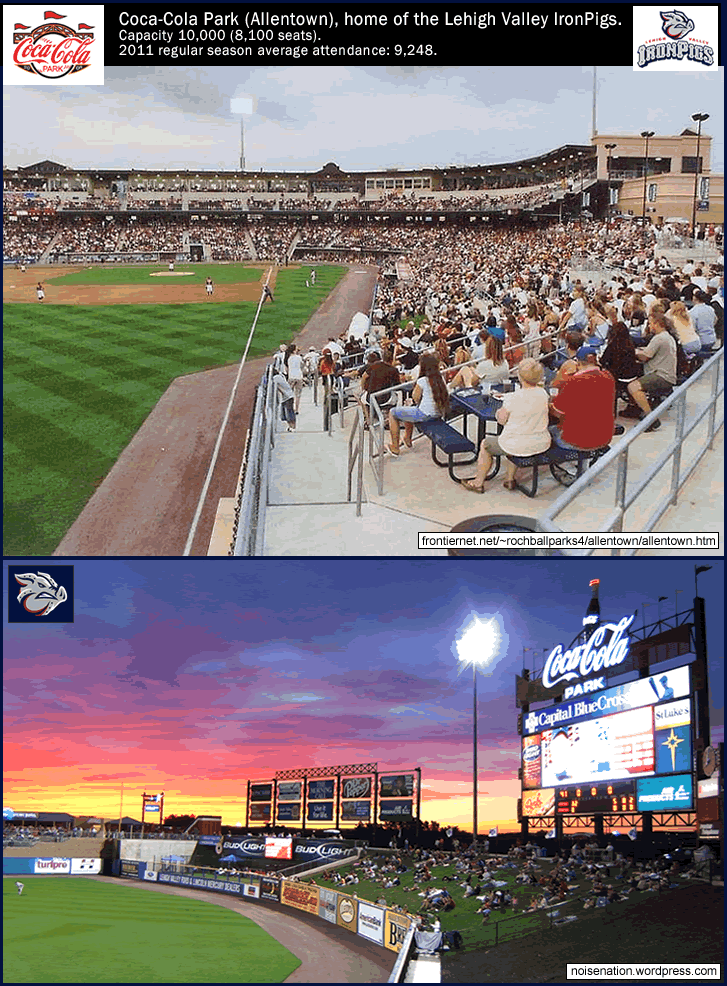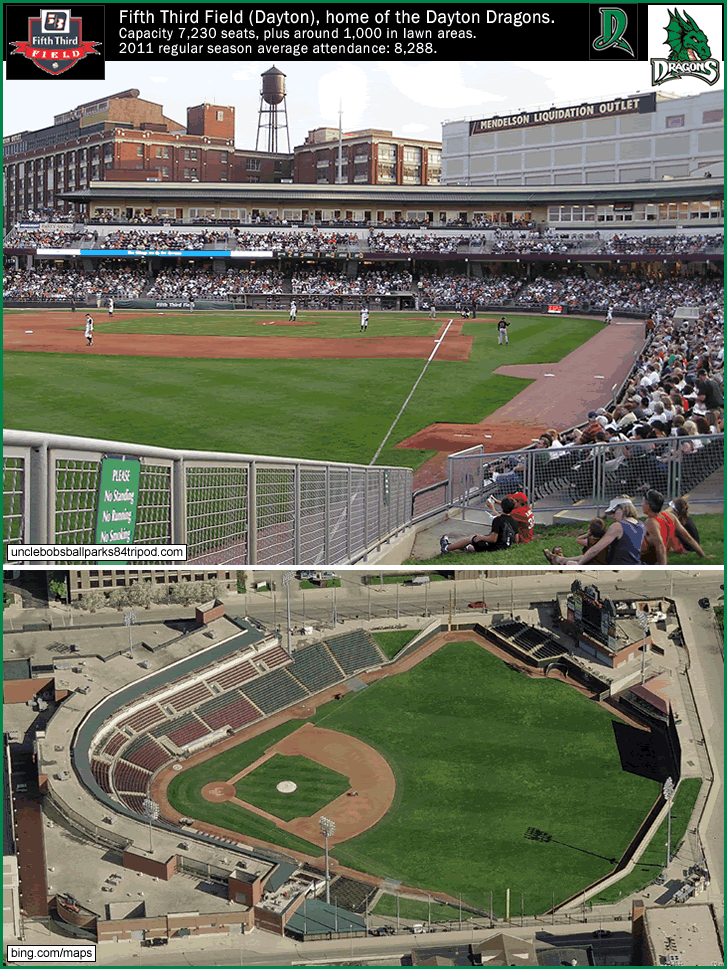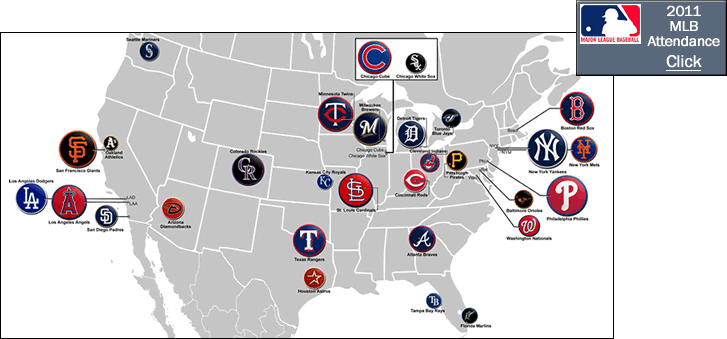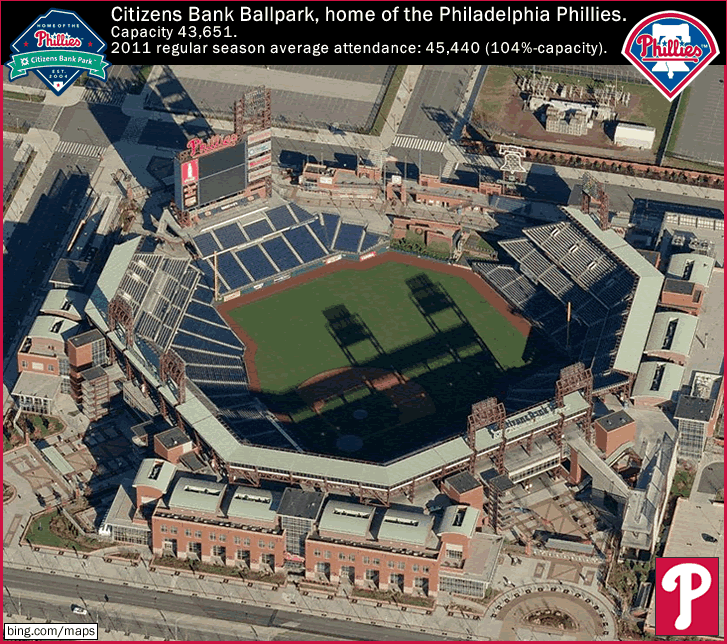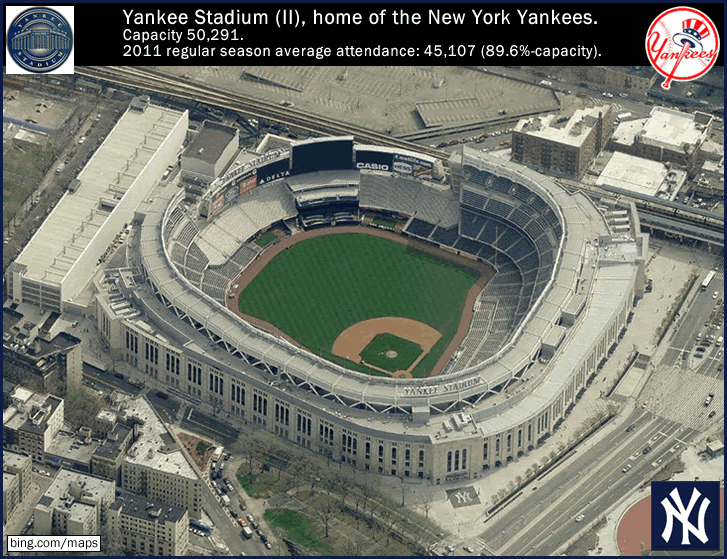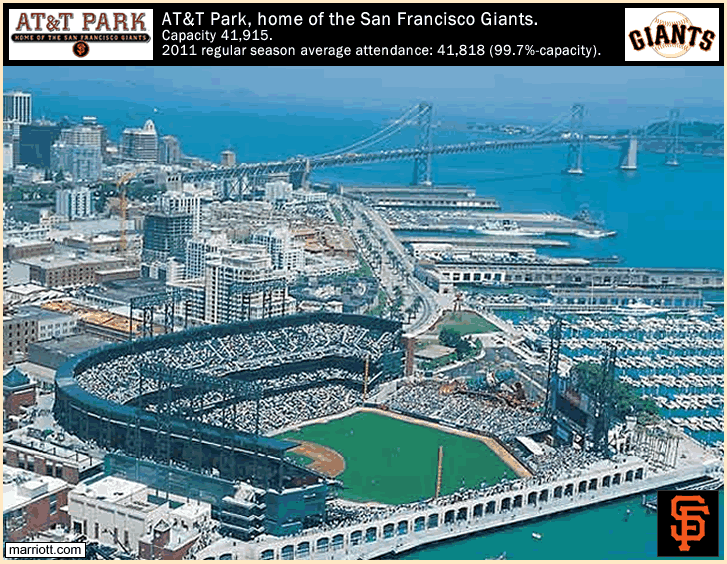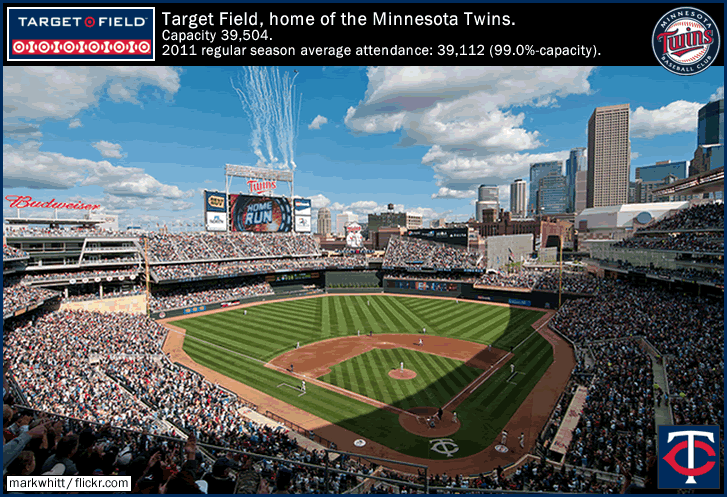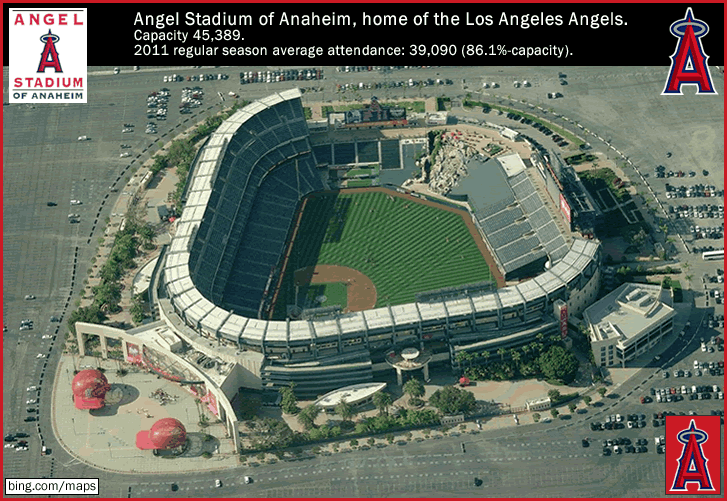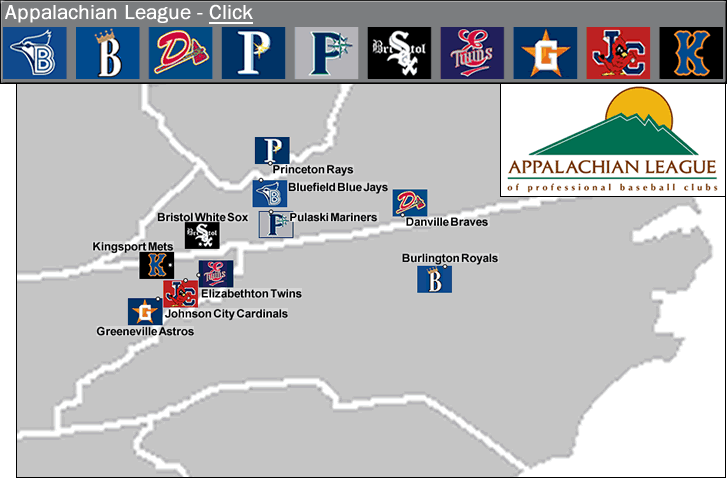
Minor League Baseball: the Appalachian League (III) (Advanced-Rookie Classification)
…
…
Minor League Baseball attendance – ‘2012 Affiliated Attendance by League‘ (ballparkdigest.com).
There are 6 leagues within Organized Baseball which are Rookie Class leagues: the Appalachian League, the Pioneer League, the Arizona League, the Gulf Coast League, and 2 foreign-based leagues, the Dominican Summer League, and Venezuelan Summer League. But in only two of them are attendances measured. Those 2 are also classified a bit differently, as Advanced-Rookie. They are the Appalachian League and the Pioneer League.
The Advanced-Rookie classification
From the en.wikipedia.org page ‘Minor League Baseball…{excerpt}…”Leagues in the Rookie classification play a shortened season…starting in mid-June and ending in late August or early September. … Advanced Rookie leagues (Appalachian and Pioneer) play between 67 and 75 games”…/
…”The Appalachian and Pioneer leagues are actually hybrid leagues; while officially classed as “Rookie” leagues, eight major league teams have their highest-class short season teams in those leagues. These eight teams also maintain Rookie-level teams in other leagues as well. The Gulf Coast and Arizona leagues are informally known as “complex” leagues, nicknamed for the minor-league complexes where most games in those leagues are played.” …{end of excerpt}.
{Excerpt from the ‘Pioneeer League‘ page at en.wikipedia.org} …”Classified as a Rookie league, the Pioneer League [as well as the Appalachian League, are]…predominantly made up of players out of high school and [are] almost exclusively the first professional league many players compete in.”…{end of excerpt}.
…
-
A brief history of the Appalachian League, with present-day locations of teams noted
The Appalachian League (III) is the third league which has used that name, the first being located in eastern Tennessee, far western North Carolina, and far western Virginia in the early part of the 20th century. The original Appalachian League (I) existed for 4 seasons from 1911 to 1914, and was a totally Independent league (with no teams having any Major League affiliation). The 6 teams in the first season were – Asheville (NC) Moonshiners, Bristol (VA) Boosters, Cleveland (TN) Counts, Johnson City (TN) Soldiers, Knoxville Appalachians, and Morristown (TN) Jobbers. [1911 was the first appearance of 2 locations which have present-day teams [2013] in the Appalachian League – Bristol, Virginia, with the present-day Bristol White Sox (CWS); and Johnson City, Tennessee, with the present-day Johnson City Cardinals (STL).].
The second Appalachian League (II) existed for 5 seasons from 1921 to 1925 and again was entirely comprised of Independent teams (this is probably the reason why the first and second versions of the Appalachian Leagues both failed). The 6 teams in the first season of the second version of the Appalachian League (II) in 1921 were – the Bristol State-Liners, the Cleveland Manufacturers, the Greeneville (TN) Burley Cats, the [second iteration of the] Johnson City Soldiers, the Kingsport (TN) Indians, and the Knoxvlle Pioneers. [1921 was the first appearance of 2 locations which have present-day teams [2013] in the Appalachian League – Kingsport, Tennessee, with the present-day Kingsport Mets (NYM); and Greeneville, North Carolina, with the presnt-day Greeneville Astros (HOU).].
The third version of the Appalachian League was a D-level minor league, which was the lowest level in the pre-1963/64 Organized Baseball set-up. The Appalachian League (III) started in 1937 and had 4 teams, one of which, the Elizabethton Betsy Red Sox of Elizabethton, Tennessee, had an affiliation with a Major League Baseball team, the Boston Red Sox. That was the first Appalachian League team in leagues (I), (II), or (III) to have a Major League affiliation. The 4 teams in the first season of the present-day Appalachian League in 1937 were – the Elizabethton Betsy Red Sox (BOS-AL), the [third iteration of the] Johnson City Soldiers (Independent), the Newport (TN) Canners (Independent), and the Pennington Gap (VA) Lee Bears (Independent). [1937 was the first appearance of one location which has a present-day team [2013] in the Appalachian League – Elizabethton, Tennessee, with the present-day Elizabethton Twins (MIN).].
Unlike many other minor leagues, the Appalachian League was not forced to cancel seasons during World War II, but it did play with a smaller league-size of only 4 teams. After the War in 1946, in the 10th season of the Appalachian League (III), the league expanded from 4 to 8 teams with the inclusion of teams from West Virginia (2 of them) for the first time with the Bluefield Blue-Grays (BOS-NL) (located in Virginia and West Virginia, with the ballpark, Bowen Field, sitting right on the border of the two states); and the Welch (WV) Miners (Independent). The two other new teams in 1946 were the Pulaski (VA) Counts (Independent); and the New River (VA) Rebels (Independent). By this time the majority of teams in the Appalachian League had been able to attain affiliation with a Major League ball club (affiliation with an MLB team basically increases the likelihood of the minor league team’s survival), with the exception in 1946 being 3 of the 4 aforementioned new teams. [1946 was the first appearance of 2 locations which have present-day teams [2013] in the Appalachian League – Bluefield, Virginia/West Virginia, with the present-day Bluefield Blue Jays (TOR); and Pulaski, Virginia, with the present-day Pulaski Mariners (SEA).].
The Appalachian League shrunk back to a 6-team league in 1951, and it continued as a D-level minor league up to 1955. In 1956, the league was forced to go dormant for one season due to several teams having financial problems. In 1957, the Appalachian league re-started. It continued as a D-level minor league until 1962. In 1963, as part of Major League Baseball’s re-organization of their minor leagues [which occurred in 1963 and 1964], the Appalachian League was re-classified as a Rookie League.
Here are the 6 teams in the 1963 Appalchian League (III), which was the first season the league played as a Rookie class league – the Bluefield Orioles (BAL), the Harlan (KY) Yankees (NYY), the Kingsport Pirates (PIT), the Middlesboro (KY) Cubsox (Independent), the Salem (VA) Rebels (SFG), and the Wytheville (NC) Twins (MIN).
To round the first-appearance of each present-day Appalachian League location, here are all the first appearances of 2013 teams’ locations -
1911, in Appalachian League (I): Bristol, VA and Johnson City, TN.
1924, in Appalachian League (II): Greeneville, NC and Kingsport, TN.
1937, in Appalachian League (III): Elizabethton, TN.
1946, in Appalachian League (III): Bluefield, VA/WV and Pulaski, WV.
1986, in Appalachian League (III): Burlington, NC [present-day team called the Burlington Royals (KC)].
1988, in Appalachian League (III): Princeton, WV [present-day team called the Princeton Rays (TB)].
1993, in Appalachian League (III): Danville, VA [present-day team called the Danville Braves (ATL)].
Of those 3 most recent new locations of present-day Appalachian League franchises, 2 can be seen as representative of an expansion-of-range by the Appalachian League, because two of those locations – Burlington, North Carolina and Danville, Virginia – are not really in or near the edge of the Appalachian Mountains, but are in the Piedmont region of the American Southeast {see this, ‘Piedmont (United States)‘ (en.wikipedia.org)}. You can see the difference in topographic terms, because both Danville and Burlington are the only locations in the Appalachian League that are under 650 feet elevation, while all 8 other Appalachian League teams are well above 1,000 feet elevation and a few are well above 2,000 feet elevation. Princeton, WV is the highest-elevation Appalachian League location, at around 2,438 feet (or .46 of a mile high), and Bluefield VA/WV is the second-highest-elevation Appalachian League location at around 2,389 feet [note: elevations are listed on the map page for each teams' location, right above each team's large logo within their profile boxes, as well as in the 10 illustrations at the bottom of this post.]
…
In 2012, the Appalachian League averaged 914 per game. That was up 32 per game from the 882 per game that the Appalachian League averaged in 2011. Attendance for the Appalachian League is the smallest of all the 15 minor leagues, from Triple-A-level to Rookie-level, within Organized Baseball in which attendance is measured. But that is mostly a function of the fact that Appalachian League locations are among the smallest municipalities in the USA to have pro baseball teams. Several Appalachian League municipalities – 6 of them – have city or town populations under 16,000, and even the largest, Johnson City, TN, has a city population of only around 63,000 (note: metro-area populations also listed below)
Populations of Appalachian League teams’ locations -
[note: all figures from each municipalities' Wikipedia page and are from 2010, except Kingsport, TN from 2008, and Pulaski, VA from 2000.]
[Note: Johnson City, TN and Elizabethton, TN are part of the Johnson City metropolitan area, which has a population of around 193,000 {2008 figure}. Kingsport, TN and Bristol, VA are part of the Kingsport, TN/Bristol, VA/Bristol, TN metropolitan area, which has a population of around 302,000 {2008 figure}.]
-Johnson City, TN : city, 63,152 population/ metro-area, ~193,000 population {see above}.
-Kingsport, TN: city, 48,205 population/ metro-area ~302,000 population {metro-area combined with Bristol, VA}.
-Bristol, VA: city, 17,853 population/ metro-area ~302,000 population {metro-area combined with Kingsport, TN}.
-Burlington, NC: city, 49,963 population/ metro-area, ~148,000 population.
-Danville, VA: 43,055 population.
-Bluefield VA/Bluefield WV: {5,444 + 10,447} ~15,891 population.
-Greeneville, TN: 15,198 population.
-Elizabethton, TN: 14,176 population.
-Pulaski, VA: 9,473 population.
-Princeton, WV: 6,432 population.
So Princeton, West Virginia has around 6,400 inhabitants, and its pro baseball team drew 816 per game in 2012. That means 12.5 percent of the equivalent population of the community, on average, went to Princeton Rays baseball games last season. Now that is what you call community baseball.
…
-
The 10 teams of the Appalachian League [2013], with photos of their stadiums and with notable former players listed
Appalachian League East Division
Bluefield Blue Jays, est. 1963.
Notable Bluefield/ Appalachian League alumni: Boog Powell (1959), Sparky Lyle (1964), Eddie Murray (1973), Cal Ripken, Jr. (1978), Jayson Werth (1998).

Photo credit above – littleballparks.com/Bluefield.
…
Burlington Royals, est. 1986.
Notable Burlington/ Appalachian League alumni: Jim Thome (1990), Manny Ramirez (1991), Bartolo Colon (1994), C.C. Sabathia (1998).
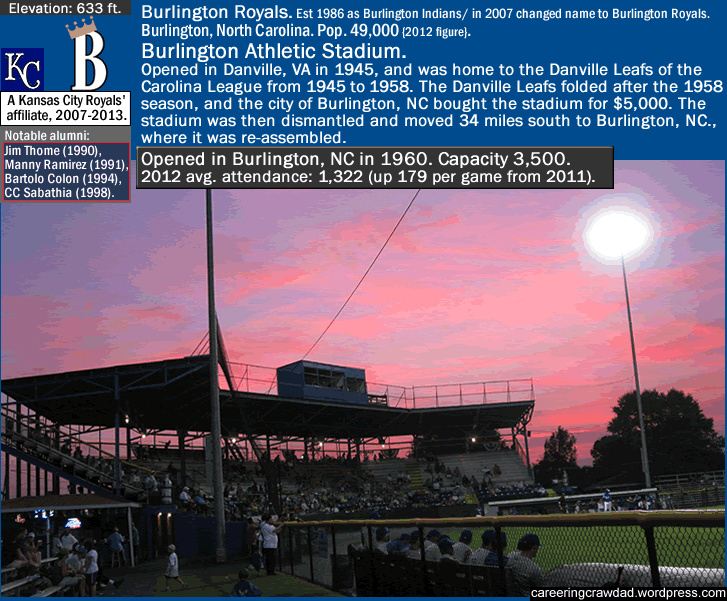
Photo credit above – careeringcrawdad.wordpress.com//labor-day-and-the-end-of-baseball-season-2012.
…
Danville Braves, est. 1993.
Notable Danville/ Appalachian League alumni: Jermain Dye (1993), Andruw Jones (1994), Rafael Furcal (1998), Jason Marquis (1998).
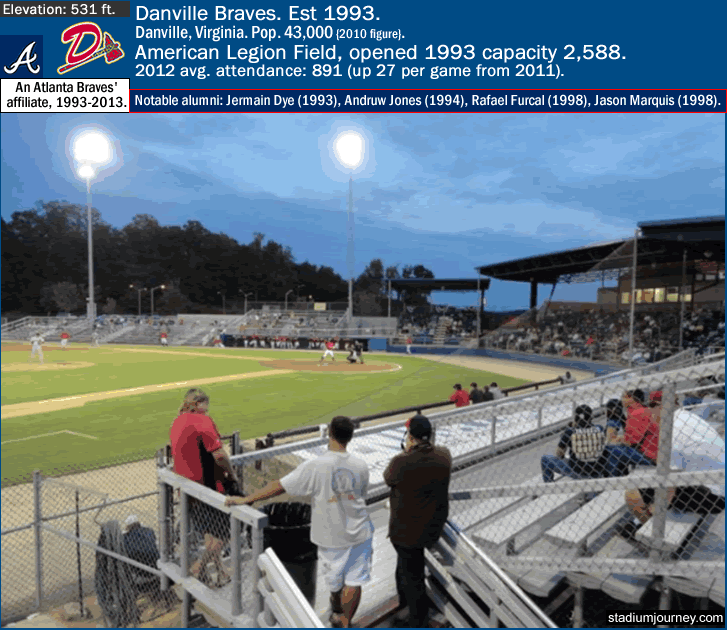
Photo credit above – stadiumjourney.com/stadiums/american-legion-field .
…
Princeton Rays, est 1988.
Notable Princeton/ Appalachian League alumni: Carl Crawford (1999), Josh Hamilton (1999), Jonny Gomes (2001), Jeremy Hellickson (2005).
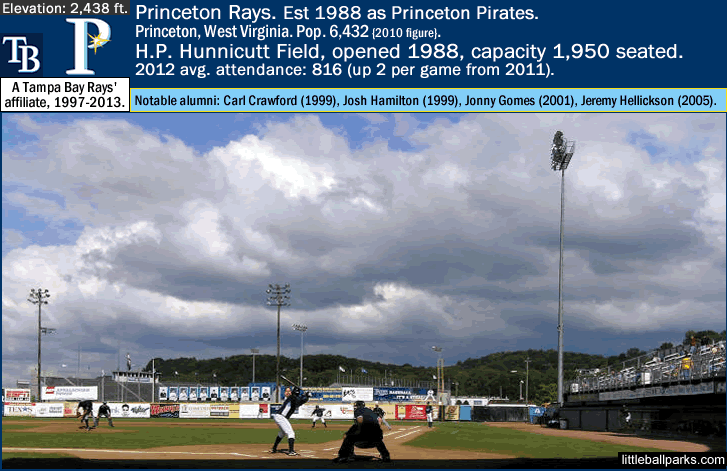
Photo credit above – littleballparks.com/Princeton.
…
Pulaski Mariners, est. 1982.
Notable Pulaski/ Appalachian League alumni: Dave Justice (1985), Jason Schmidt (1992), C.J. Wilson (2005).

Photo credit above – baseballdiaries.blogspot.com/2012/01/pulaski-mariners-vs-danville-braves
…
Appalachian League West Division
Bristol White Sox, est 1969.
Notable Bristol/ Appalachian League alumni: Lance Parrish (1974), Lou Whitaker (1975), Alan Trammell (1976), Carlos Lee (1995).
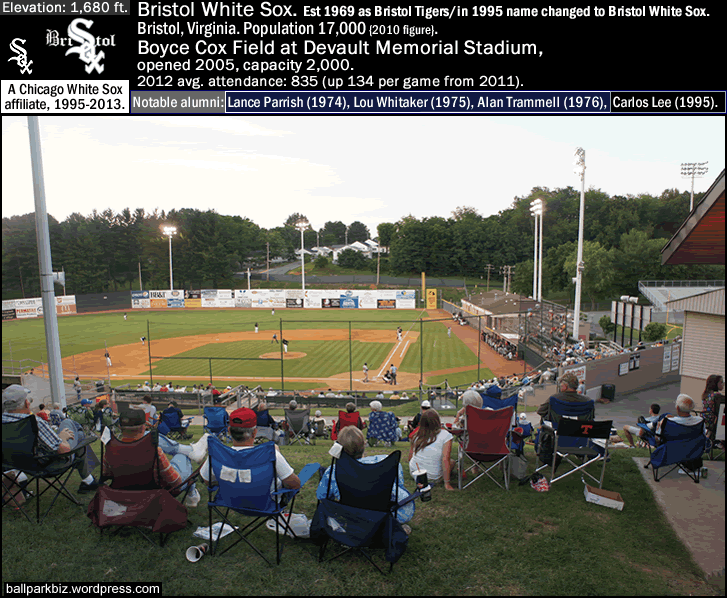
Photo credit above – ballparkbiz.wordpress.com/impressions-of-a-ballpark-hunter-surrealism-in-bristol
…
Elizabethton Twins, est. 1974.
Notable Elizabethton/ Appalachian League alumni: Kent Hrbek (1979), Gary Gaetti (1979), Kirby Puckett (1982), Justin Mourneau (2000).
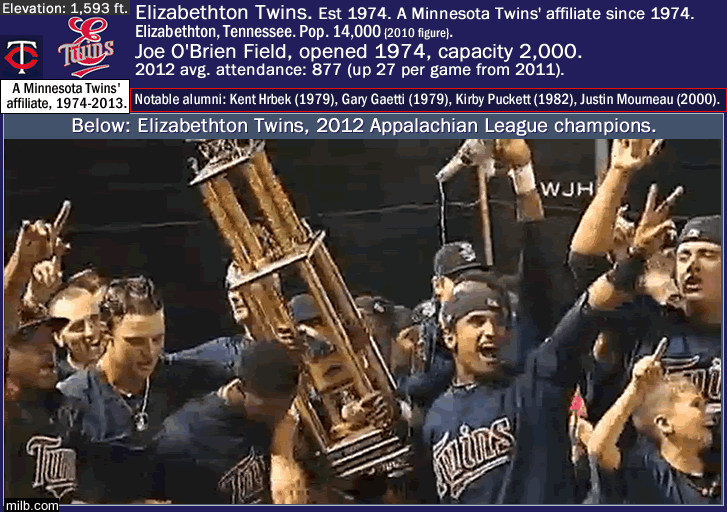
Image credit above – ‘Twins Win Championship [2012]‘, (Screenshot of video at Elizabethtoon Twins’ page at milb.com/multimedia.
…
Greeneville Astros, est. 2004.
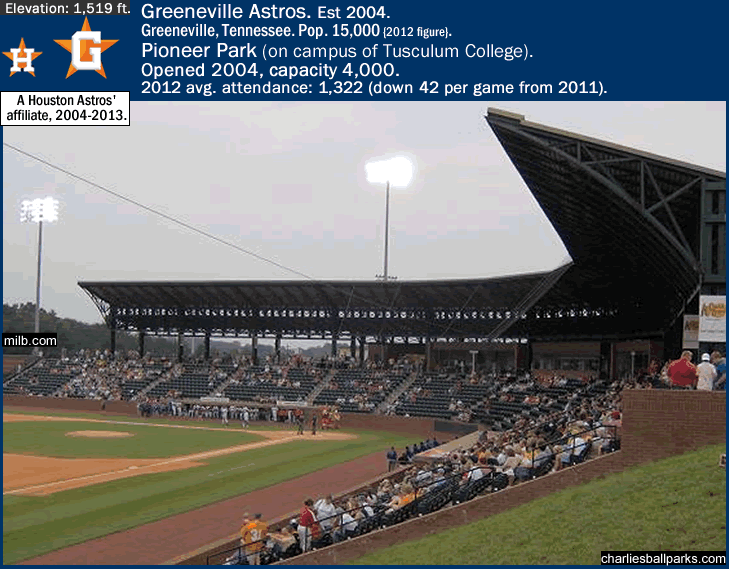
Photo credit above – ‘Attendance History‘ (milb.com/[Greeneville]).
…
Johnson City Cardinals, est. 1937.
Notable Johnson City/ Appalachian League alumni: Terry Pendleton (1982), Jeff Fassero (1984), Coco Crisp (2000), Yadier Molina (2001).
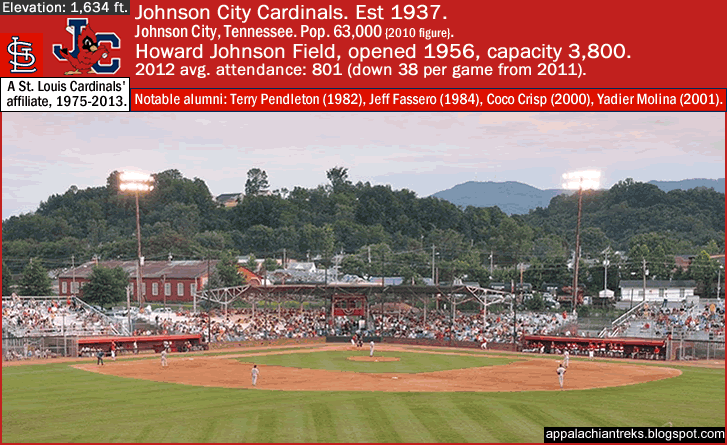
Photo credit above – appalachiantreks.blogspot.com/howard-johnson-field.
…
Kingsport Mets, est. 1969.
Notable Kingsport/ Appalachian League alumni: Dale Murphy (1974), Darryl Strawberry (1980), Dwight Gooden (1982), José Reyes (2000).

Photo credit above – kingsporttn.gov.
___
Attendance data from milb.com, here.
Base map of USA byThesibboleth at en.wikipedia.org/wiki/File:Blank_US_Map.svg.
Photo credits on the map page –
Bluefield Blue Jays/ Bowen Field, Heath Bintliff at network.yardbarker.com/bowen_field_bluefield_wv .
Burlington Royals/ Burlington Athletic Stadium, littleballparks.com/Burlington-NC.
Danville Braves/ American Legion Field, littleballparks.com/DanvilleVA.
Princeton Rays/ H.P. Hunnicutt Field, writeopinions.com.
Pulaski Mariners/ Calfee Park, baseballdiaries.blogspot.com/2012/01/pulaski-mariners-vs-danville-braves.
…
Bristol White Sox/ Devault Memorial Stadium, thesportstraveleronline.com/byrce-cox-fielddevault-memorial-stadium.
Elizabethton Twins/ Joe O’Brien Field, ballparkreviews.com/Elizabethton.
Greeneville Astros/ Pioneer Park at Tusculum College, charliesballparks.com.
Johnson City Cardinals/ Howard Johnson Field, appalachiantreks.blogspot.com/howard-johnson-field.
Kingsport Mets/ Hunter Wright Stadium, littleballparks.com/Kingsport.
